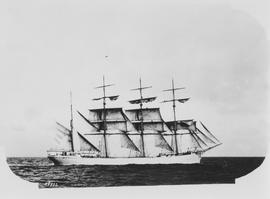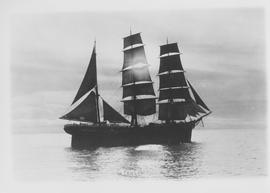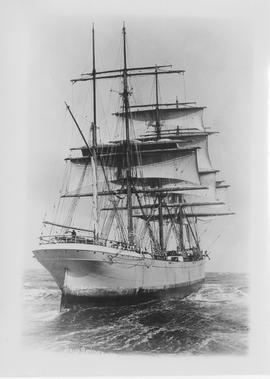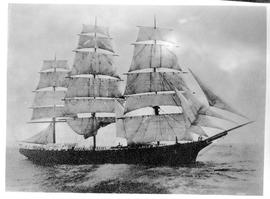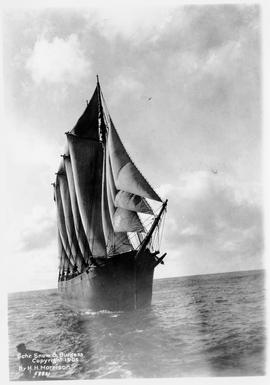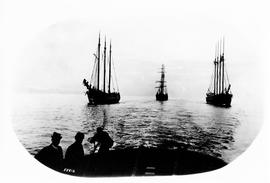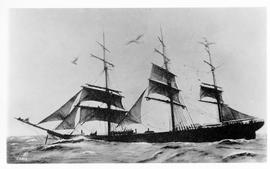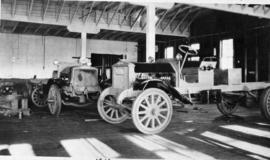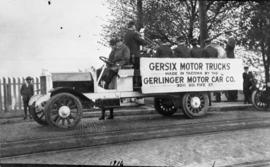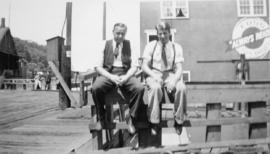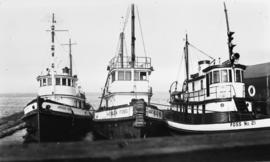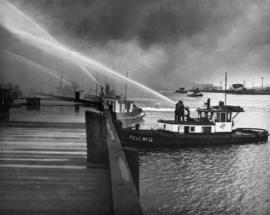Courtney Ford, Portluck, and Eric pulled by the tug Tacoma. The Courtney Ford (originally a skysail brig, but rerigged late in 1901 as a three -masted schooner) was wrecked September 7, 1902 on Glen Island, Izembek Bay, her hull being still fairly intact after more than 60 years on the beach. (Gordon Newell, Maritime Events of 1902, H.W. McCurdy Marine History of the Pacific Northwest. Seattle : Superior Pub. Co., 1977, p. 84.) Eric, four-masted schooner of 574 tons and 750 M capacity, was built by Hall Bros. In 1917, the Eric was sold for $65,000 to Burns Philp Co., the Australian copra merchants, but retained U. S. registry. In December, 1923, she put into Honolulu, waterlogged, on a voyage from Clallam Bay, B. C., to Brisbane, Australia; but was repaired and completed the voyage. On her return to San Francisco, the Eric was sold to J. E. Shields of Seattle, and in January, 1925, was towed to that port. There she was sold to Sir Guy Gaunt, and went under British registry for a world cruise. John Lyman, "Pacific Coast-Built Sailers, 1850-1950" The Marine Digest. April 5, 1941, p. 2.
Sailing ships; Schooners;

